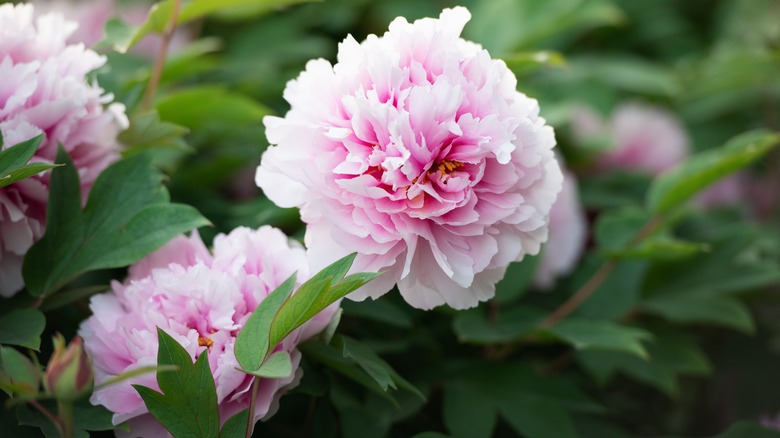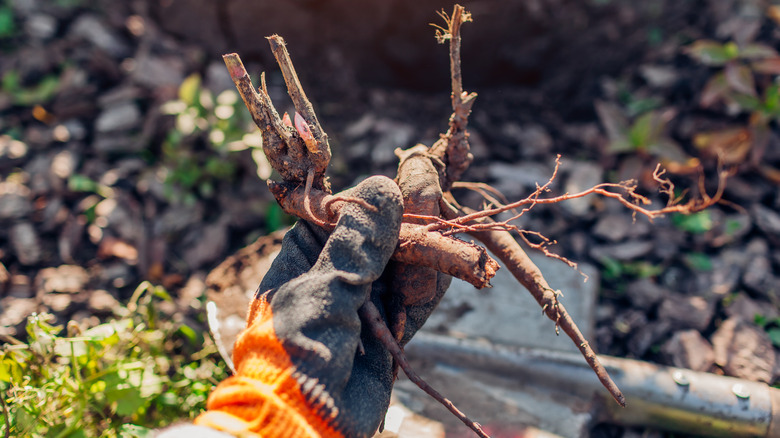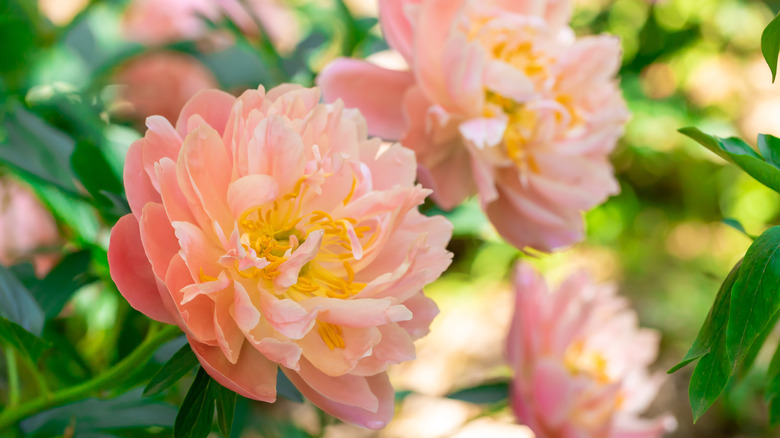Don't Let Warm Weather Stop You From Growing Peonies. Here's How
Peonies are some of the most beautiful spring flowers around. Growing peonies in your garden or landscape is a delightful experience, and thanks to their long lives, you can plant them now and enjoy them for decades. Unfortunately, many peonies only grow well in cool climates. That doesn't mean growers with warmer weather have to give up on these beautiful flowers, though. If you want to grow peonies in a warmer climate, it's important to choose the right varieties, take extra care when planting your peonies, and give your peonies some extra care in autumn.
Herbaceous peonies (Paeonia lactiflora) die back to their roots every autumn, only to reemerge every spring. They are some of the most popular and well-known peonies, but they're far from the only species available. Other common types on the market include tree peonies like P. suffruticosa, which don't completely die back in winter, and Itoh (also called intersectional peonies), a hybrid of herbaceous and tree peonies. Many peonies require several weeks of temperatures below 40 degrees Fahrenheit each winter, or they will not flower. Select a "low chill" peony variety like 'Felix Crousse' if you're gardening in an area with mild winters. While herbaceous peonies are generally hardy in zones 3 through 7, these cultivars should also be able to handle zone 8 weather in many cases. Itoh and tree peonies are also more tolerant of warm winters and can thrive in zones 4 through 9.
Planting peonies in warm climates
The ideal time to plant all varieties of peonies is in autumn when the plant is naturally beginning to go dormant. While they generally grow best in full sun, growers in warmer climates should consider planting their peonies in more shade to help the plants stay cooler. Morning sun and dappled or part shade in the afternoon is ideal. The New Mexico State University College of Agricultural, Consumer, and Environmental Sciences suggests planting peonies in north- or east-facing locations to help them stay cool.
Plant peonies in well-draining soil with neutral to slightly basic pH regardless of where you are growing them. Soaking your peony tubers before planting may seem like a waste of time, but it can help hydrate them and give the peonies the best start possible. Planting herbaceous peonies too deeply may be a common reason why your peonies aren't blooming properly. Gardeners in warm climates should plant their peonies evenly more shallowly than is generally recommended. In the south, herbaceous peonies should be planted an inch or less below the soil surface.
Autumn care for peonies in warm climates
Tree peonies generally require little care after they are planted, and while you should remove dead or damaged branches, be sure not to cut your tree peony back too far because it does not regrow from the roots but instead grows like a shrub. Herbaceous and Itoh peonies, on the other hand, naturally die back to their roots in autumn. In southern regions, you may have to help these types of peonies to enter dormancy by cutting them to the ground in late fall.
If hot and humid summers have caused your peonies to suffer from diseases, then fall is the time to handle that as well. Remove all diseased plant material from the area where your peonies are growing and any nearby mulch that may have fungal spores on it. This should prevent diseases from overwintering and reinfecting your plants next spring.



